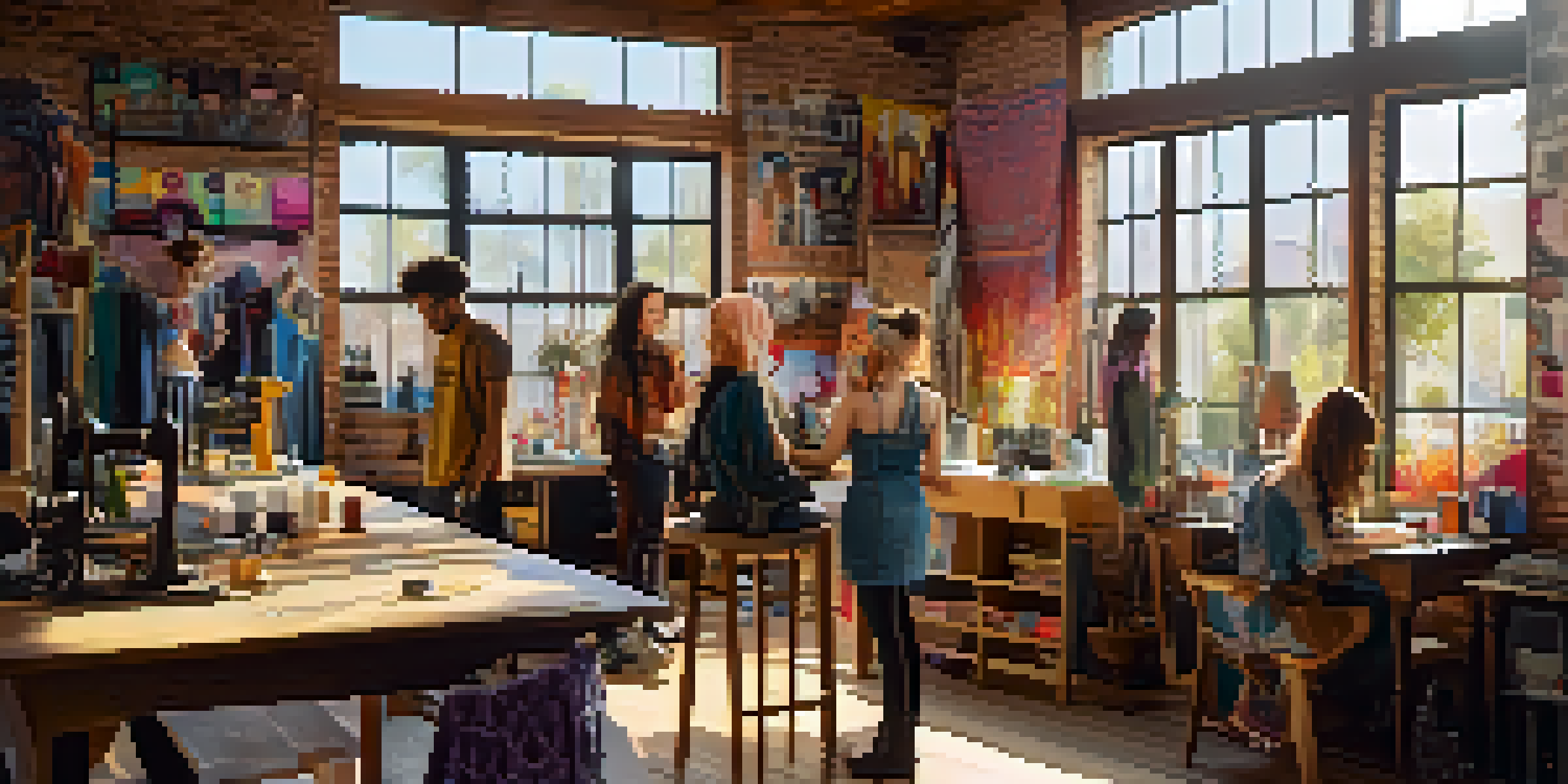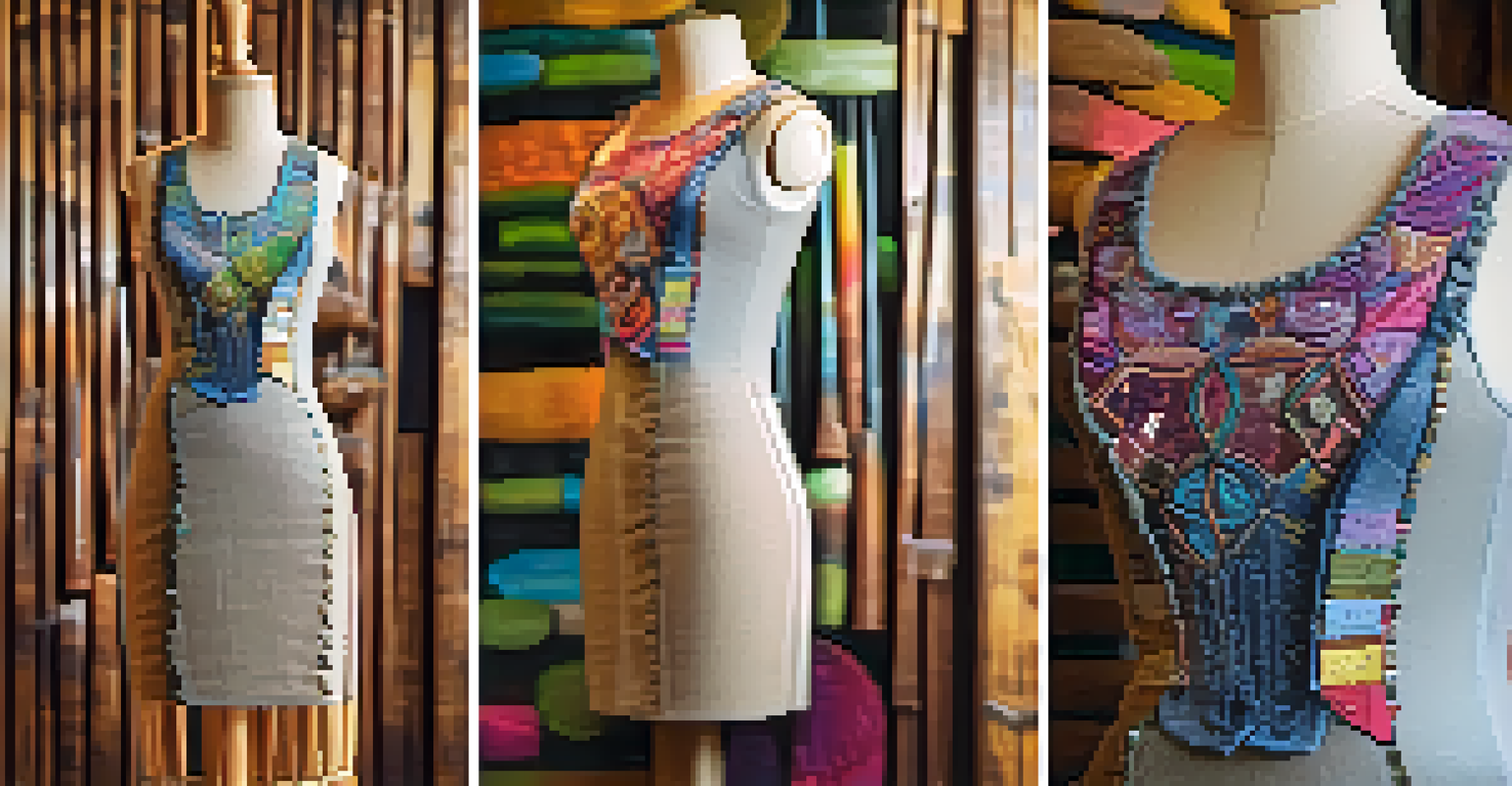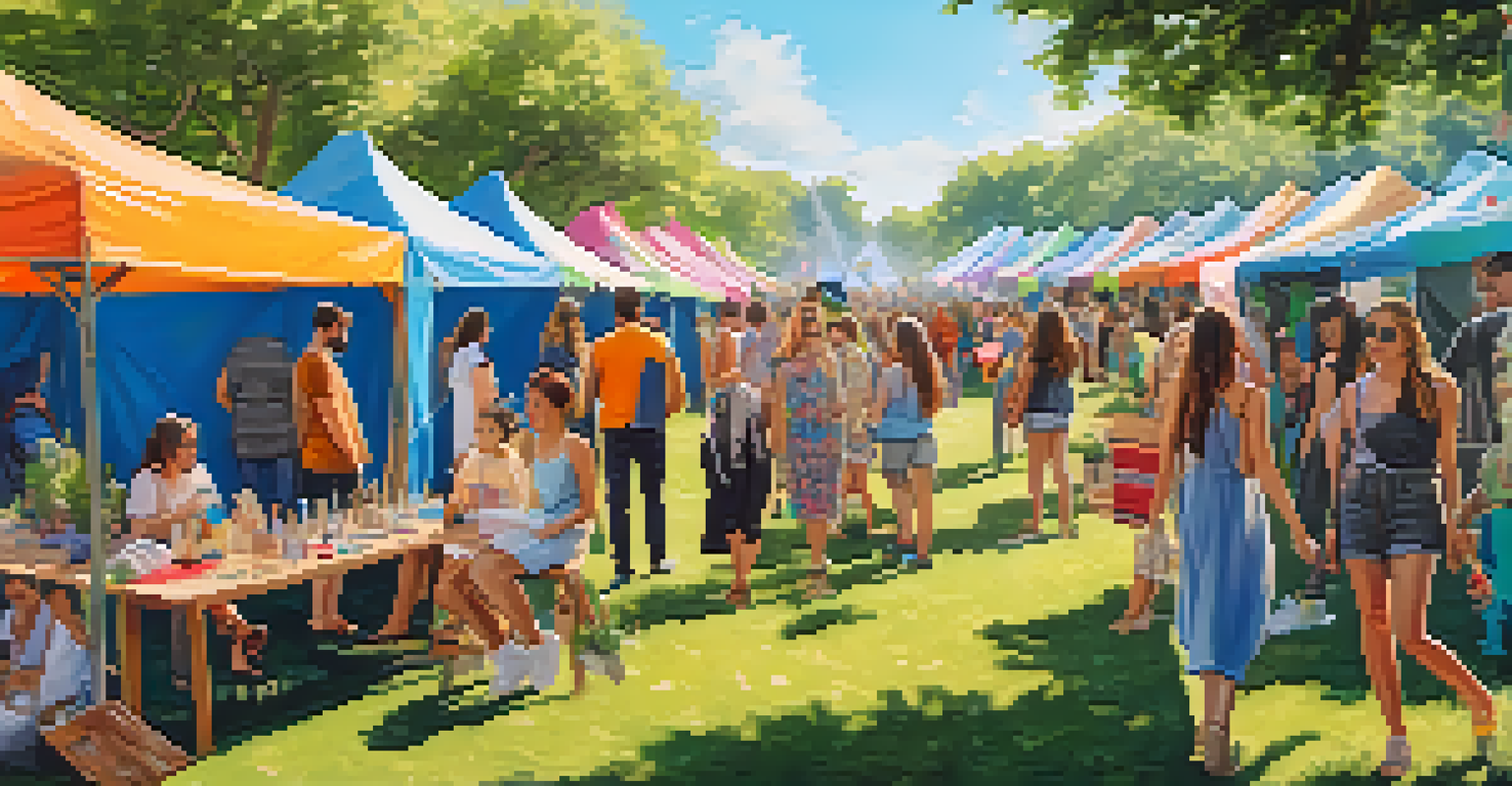The Evolution of DIY Fashion: From Subculture to Mainstream

The Roots of DIY Fashion: A Subculture Emerges
DIY fashion began as an underground movement, primarily among artists and punks in the late 1970s. These individuals sought to express their identities through unique, handmade clothing that stood in stark contrast to mass-produced fashion. This subculture emphasized creativity and personal expression, allowing enthusiasts to customize their wardrobes while often repurposing thrifted pieces.
Fashion is the armor to survive the reality of everyday life.
As the movement gained traction, it became a form of rebellion against the mainstream fashion industry, which was seen as elitist and uniform. DIY enthusiasts embraced the idea that fashion could be both personal and political, using their creations to challenge societal norms. This laid the groundwork for a community that valued individuality over conformity.
Over time, this subculture fostered a sense of belonging and support, with local sewing circles and swap meets emerging as popular gathering spots. As more people engaged in DIY fashion, it began to evolve, attracting a wider audience who were eager to explore their creative sides and redefine their personal styles.
The Rise of Technology: Tools for the DIY Revolution
The advent of technology has significantly influenced the DIY fashion scene. With the rise of the internet, platforms such as Pinterest and Etsy provided aspiring designers with an accessible way to showcase and sell their creations. This not only democratized fashion but also encouraged a global exchange of ideas and techniques.

Social media further fueled this revolution, as influencers and everyday users began sharing their DIY projects with the world. Tutorials, patterns, and inspiration are just a click away, making it easier for anyone to dip their toes into crafting their own clothing. As a result, DIY fashion became synonymous with creativity and innovation.
DIY Fashion Embraces Individuality
The DIY fashion movement allows individuals to express their unique identities through personalized and handcrafted clothing.
Moreover, advances in technology, such as 3D printing and digital fabric printing, opened new doors for DIY enthusiasts. These tools allowed for even greater customization, enabling individuals to create complex designs that were previously unimaginable. The fusion of traditional crafting and modern technology has transformed DIY fashion into an exciting and evolving landscape.
Mainstream Collaborations: DIY Meets High Fashion
In recent years, the fashion industry has begun to embrace DIY culture, blurring the lines between high fashion and handmade creations. Numerous designers have collaborated with DIY brands or even hosted workshops, further legitimizing the movement within the mainstream market. These collaborations often celebrate the unique qualities of handmade fashion while attracting a broader audience.
Creativity is intelligence having fun.
For instance, major fashion houses have launched capsule collections that highlight sustainable practices and the importance of individuality. This shift has led to a surge in interest for upcycled and customizable pieces, allowing consumers to feel more connected to their clothing. It’s no longer just about buying a designer item; it’s about owning a piece of art that tells a story.
As a result, consumers are more likely to seek out DIY-inspired pieces and engage with brands that promote creativity and self-expression. This trend indicates a significant shift in consumer values, with many prioritizing sustainability and uniqueness over fast fashion’s fleeting trends.
The Role of Sustainability in DIY Fashion
Sustainability is a cornerstone of the DIY fashion movement, resonating deeply with its core values. As more individuals become aware of the environmental impact of fast fashion, the appeal of creating one’s own garments from recycled materials has grown. This focus on sustainability aligns perfectly with the ethos of DIY culture, which encourages resourcefulness and creativity.
Many DIY enthusiasts engage in upcycling, transforming old or discarded clothing into new pieces, thereby reducing waste. This practice not only fosters creativity but also challenges the throwaway culture of modern fashion, promoting a more mindful approach to consumption. The act of repurposing garments is not just practical; it’s a statement about valuing what already exists.
Sustainability Drives DIY Growth
As awareness of fast fashion's environmental impact rises, more people turn to DIY fashion to create sustainable and upcycled garments.
Furthermore, DIY fashion promotes a shift toward slower fashion, where the process of making clothing becomes as important as the final product. By investing time and effort into their creations, individuals cultivate a deeper appreciation for their clothing, leading to more thoughtful purchasing decisions. This movement is a powerful reminder that fashion can be both beautiful and responsible.
The Impact of DIY Fashion on Personal Identity
DIY fashion has become a vital means for individuals to express their personal identities. In a world where conformity often reigns, crafting unique clothing allows people to celebrate their individuality and showcase their creativity. This self-expression can be liberating, providing a canvas for personal storytelling through fashion.
Many DIY enthusiasts find empowerment in the process of designing and creating their own garments. This journey not only enhances their skills but also builds confidence as they experiment with styles and techniques. By wearing their creations, they share a piece of themselves with the world, inviting others to appreciate the beauty of personal narratives woven into their outfits.
Moreover, DIY fashion fosters community, as individuals connect over shared interests and experiences. Whether through online forums or local crafting groups, these connections create a supportive environment that nurtures creativity and personal growth. This sense of belonging makes DIY fashion not just a hobby, but a transformative experience.
Challenges Faced by DIY Fashion Enthusiasts
Despite its popularity, the DIY fashion movement faces challenges that can deter new enthusiasts. One significant hurdle is the perception that creating clothing from scratch is time-consuming and complicated. Many potential DIYers might feel overwhelmed by the skills required or fear that their creations won't meet their expectations, leading to hesitation in starting.
Additionally, access to quality materials can be a barrier for some. While many DIY enthusiasts embrace thrifting and upcycling, finding the right fabrics and tools may not always be feasible for everyone. This disparity can discourage individuals from pursuing their creative fashion endeavors, limiting the movement’s growth.
Technology Enhances DIY Creativity
Advancements in technology, such as social media and 3D printing, have made DIY fashion more accessible and innovative for enthusiasts.
Finally, as DIY fashion gains mainstream attention, there’s a risk of commercialization that can dilute its original spirit. The challenge lies in maintaining the essence of DIY culture while navigating the pressures of the fashion industry. Balancing authenticity with broader appeal is crucial to ensure that the movement remains true to its roots.
The Future of DIY Fashion: Trends to Watch
Looking ahead, the future of DIY fashion appears bright and full of potential. As sustainability continues to be a priority for consumers, the demand for handmade and customizable pieces is likely to grow. This trend will encourage more individuals to explore their creativity and take an active role in their fashion choices.
Emerging technologies, such as augmented reality and virtual reality, may also play a significant role in shaping the DIY fashion landscape. Imagine being able to try on virtual clothing designs before creating them! These innovations could revolutionize the way we approach fashion, merging the physical and digital worlds in exciting ways.

Ultimately, the evolution of DIY fashion reflects a broader cultural shift towards individuality, sustainability, and creativity. As more people embrace the idea that fashion is personal and expressive, the DIY movement will continue to thrive, inspiring future generations to craft their own unique styles.